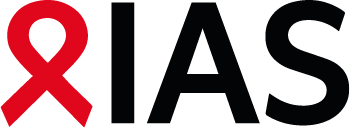Share Abstract
Community-based HIV-free survival in high prevalence settings after introduction of Option B+: Results from Lesotho
Abstract Content:
Background: Population-based HIV-free survival (HFS) at
18-24 months among HIV-exposed infants (HEI) in high prevalence settings with
Option B+ is largely unknown. We
conducted a community-based survey to determine outcomes of HEI at 18-24 months
in Lesotho.
Methods: From November 2015 to December 2016, we conducted a survey among households with a child born 18-24 months before study initiation. Facility catchment areas from 25 health facilities in Butha-Buthe, Maseru, Thaba-Tseka and Mohale''s Hoek districts were randomly selected using probability proportional to size sampling. Consecutive households were visited and eligible consenting caregivers were enrolled. Rapid HIV antibody testing was performed for mothers of unknown HIV status (never tested or HIV-negative > 3 months prior) and children of HIV-positive or unknown status mothers. Mortality information for mothers and children who died were captured.
Categorical variables were summarized by frequencies and proportions in each category. Continuous variables were summarized using means and standard deviations or medians and interquartile range. The difference in survival between sub-groups of the sample was determined using the log-rank test. Comparisons included HIV-unexposed versus HIV-exposed children.
Results: Of the 11,169 households visited, 2,190 were eligible and 1,852 (84.6%) were enrolled. Of the 374 women documented to be on antiretroviral treatment, 36% (135/374) started ART before ANC and 88% (329/374) were still on treatment at the time of the study. The mother-to-child HIV transmission rate was 5.7% [95% CI: 4.0-8.0]. The mortality rate was 2.6% [95% CI: 1.6-4.2] and 1.4% [95% CI: 0.9-2.3] among HIV-exposed and HIV-unexposed children respectively. HFS was 91.8% [95% CI: 89.2 - 93.8] among HEI. Disclosure of mother''s HIV status (aOR = 4.9, 95% CI: 1.3 - 18.2) and initiation of cotrimoxazole prophylaxis in the child (aOR = 3.9, 95% CI: 1.2 - 12.6) were independently associated with increased HIV-free survival while child growth problems (aOR = 0.2, 95% CI: 0.09 - 0.5) was independently associated with reduced HIV-free survival.
Conclusions: Even with Option B+, Lesotho has not reached elimination of mother-to-child transmission. With mortality of HIV-exposed children twice that of HIV-unexposed children, HIV-free survival was only 91.8%. Disclosure of maternal HIV status was associated with survival.
Methods: From November 2015 to December 2016, we conducted a survey among households with a child born 18-24 months before study initiation. Facility catchment areas from 25 health facilities in Butha-Buthe, Maseru, Thaba-Tseka and Mohale''s Hoek districts were randomly selected using probability proportional to size sampling. Consecutive households were visited and eligible consenting caregivers were enrolled. Rapid HIV antibody testing was performed for mothers of unknown HIV status (never tested or HIV-negative > 3 months prior) and children of HIV-positive or unknown status mothers. Mortality information for mothers and children who died were captured.
Categorical variables were summarized by frequencies and proportions in each category. Continuous variables were summarized using means and standard deviations or medians and interquartile range. The difference in survival between sub-groups of the sample was determined using the log-rank test. Comparisons included HIV-unexposed versus HIV-exposed children.
Results: Of the 11,169 households visited, 2,190 were eligible and 1,852 (84.6%) were enrolled. Of the 374 women documented to be on antiretroviral treatment, 36% (135/374) started ART before ANC and 88% (329/374) were still on treatment at the time of the study. The mother-to-child HIV transmission rate was 5.7% [95% CI: 4.0-8.0]. The mortality rate was 2.6% [95% CI: 1.6-4.2] and 1.4% [95% CI: 0.9-2.3] among HIV-exposed and HIV-unexposed children respectively. HFS was 91.8% [95% CI: 89.2 - 93.8] among HEI. Disclosure of mother''s HIV status (aOR = 4.9, 95% CI: 1.3 - 18.2) and initiation of cotrimoxazole prophylaxis in the child (aOR = 3.9, 95% CI: 1.2 - 12.6) were independently associated with increased HIV-free survival while child growth problems (aOR = 0.2, 95% CI: 0.09 - 0.5) was independently associated with reduced HIV-free survival.
Conclusions: Even with Option B+, Lesotho has not reached elimination of mother-to-child transmission. With mortality of HIV-exposed children twice that of HIV-unexposed children, HIV-free survival was only 91.8%. Disclosure of maternal HIV status was associated with survival.
